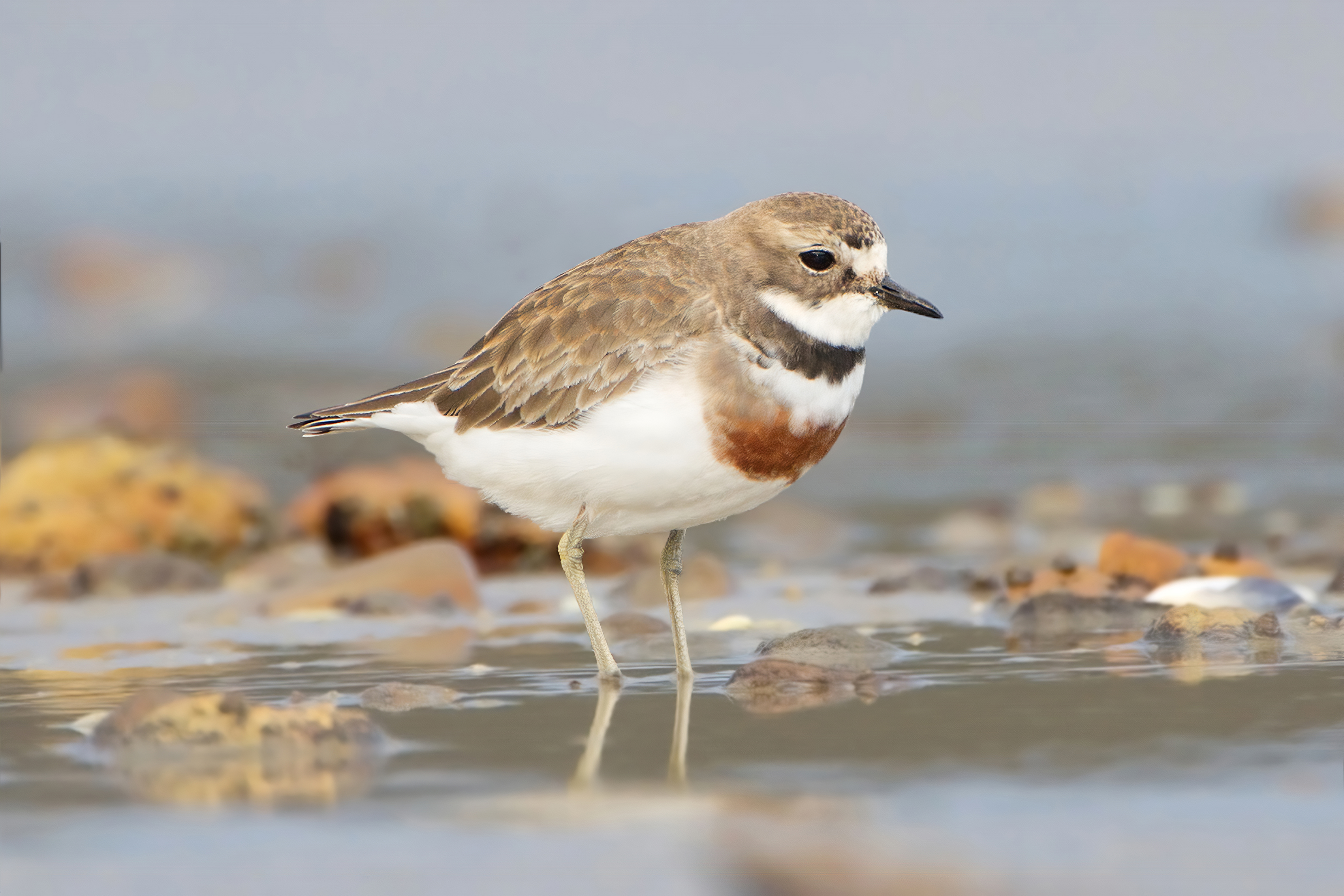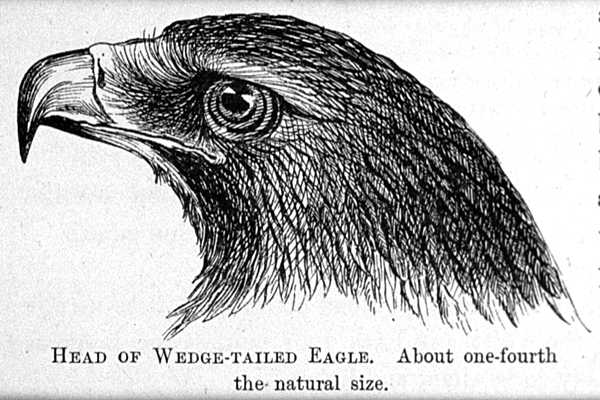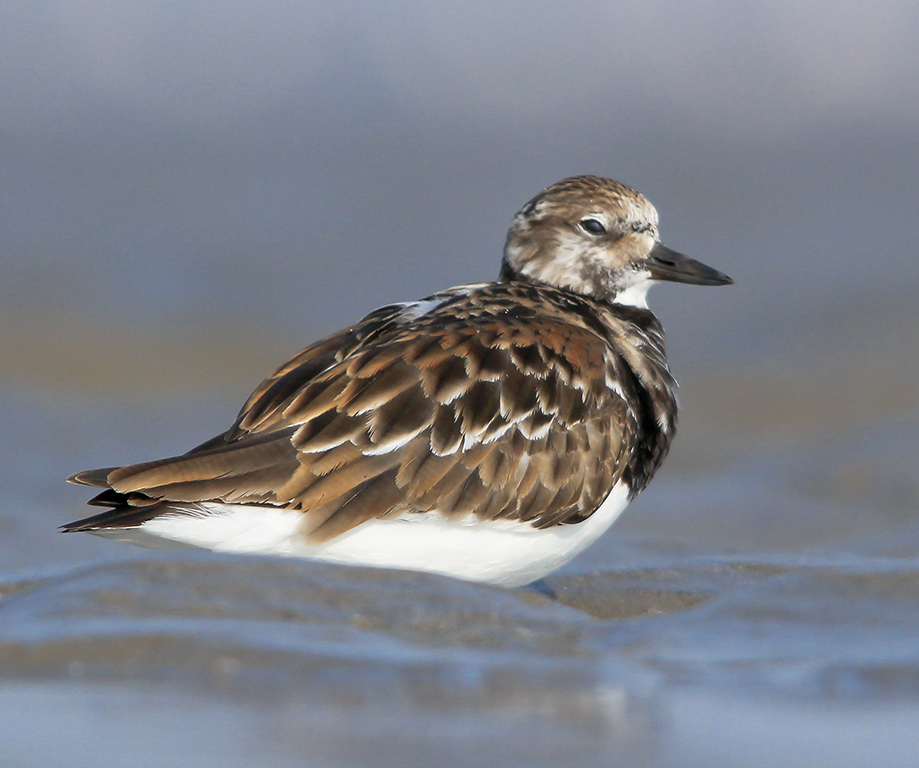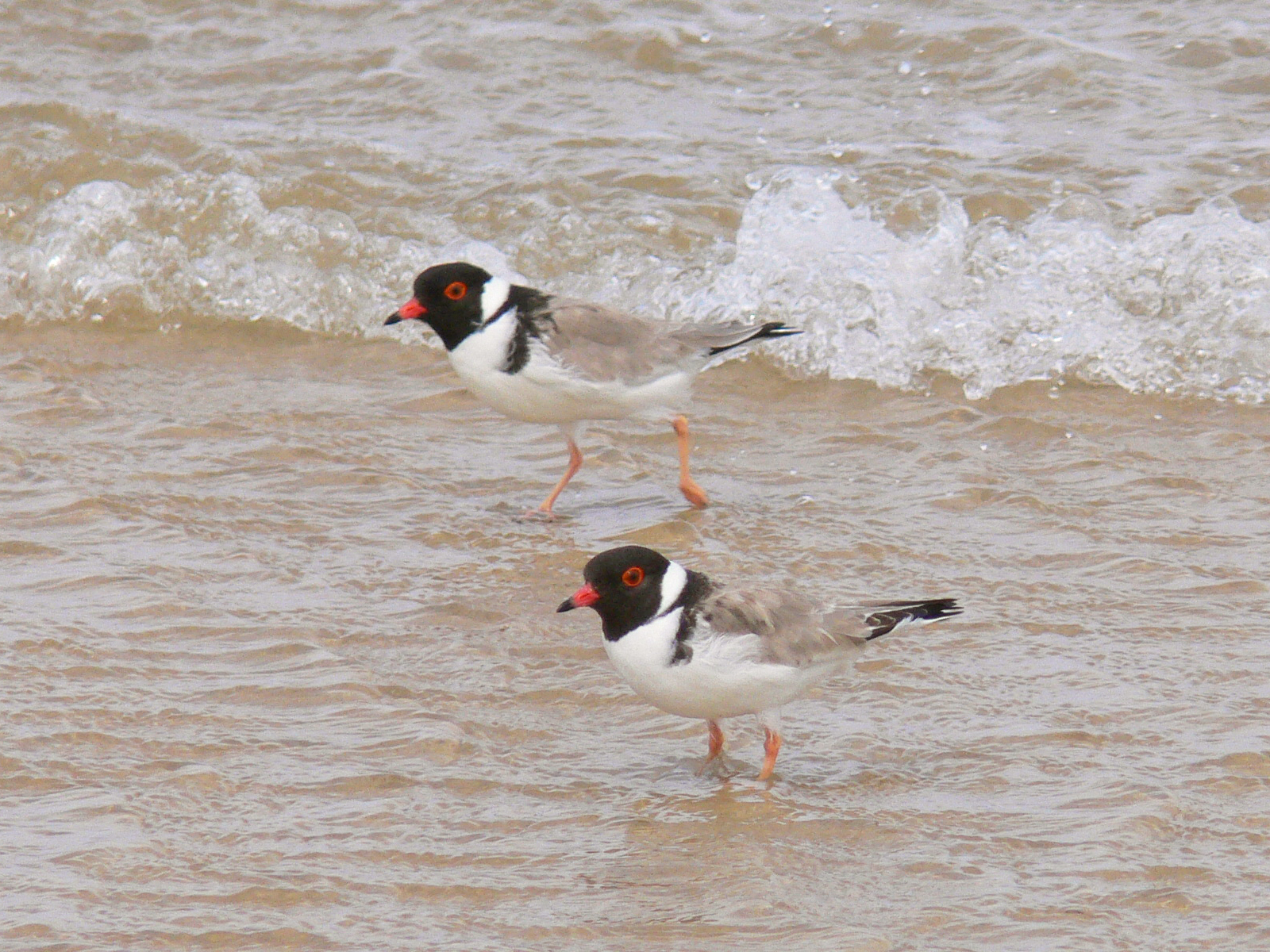|
Robbins Passage
The Robbins Passage and Boullanger Bay Important Bird Area is a 238 km2 tract of land at the North West Tasmania, western end of the north coast of Tasmania, south-eastern Australia. It comprises extensive areas of intertidal mudflats and salt marsh, saltmarsh with adjacent farmland. It is an important site for waders, or shorebirds. Description The site encompasses all the mudflats around Robbins Island (Tasmania), Robbins Island, extending eastwards around Perkins Bay to North Point. It includes most of the Duck Bay, Lees Point, Perkins Island and West Inlet Conservation Areas, as well as the Petrel Islands.BirdLife International. (2011). Important Bird Areas factsheet: Robbins Passage and Boullanger Bay. Downloaded from http://www.birdlife.org on 2011-09-30. It is adjacent to the northern end of the North-west Tasmanian Coast Important Bird Area in the west. The Petrel Islands Group includes Big Stony Petrel Island, Big Stony, Little Stony Petrel Island, Little Ston ... [...More Info...] [...Related Items...] OR: [Wikipedia] [Google] [Baidu] |
Charadrius Bicinctus Breeding - Ralphs Bay
'' Charadrius '' is a genus of plovers, a group of wader, wading birds. The genus name ''Charadrius'' is a Late Latin word for a yellowish bird mentioned in the fourth-century Vulgate. They are found throughout the world. Many ''Charadrius'' species are characterised by breast bands or collars. These can be (in the adult) complete bands (ringed, semipalmated, little ringed, long-billed), double or triple bands (killdeer, three-banded, Forbes', two-banded, double-banded) or partial collars (Kentish, piping, snowy, Malaysian, Javan, red-capped, puna). They have relatively short bills and feed mainly on insects, worms or other invertebrates, depending on habitat, which are obtained by a run-and-pause technique, rather than the steady probing of some other wader groups. They hunt by sight, rather than by feel as do longer-billed waders like snipe. Species of the genus ''Aegialites'' (or ''Aegialitis'') are now subsumed within ''Charadrius''. Taxonomy The genus ''Charadrius'' was in ... [...More Info...] [...Related Items...] OR: [Wikipedia] [Google] [Baidu] |
Red-necked Stint
The red-necked stint (''Calidris ruficollis'') is a small migratory wader. The genus name is from Ancient Greek ''kalidris'' or ''skalidris'', a term used by Aristotle for some grey-coloured waterside birds. The specific ''ruficollis'' is from Latin ''rufus'', "red" and ''collum'', "neck". Description These birds are among the smallest of waders, very similar to the little stint, ''Calidris minuta'', with which they were once considered conspecific. The red-necked stint's small size, fine dark bill, dark legs and quicker movements distinguish this species from all waders except the other dark-legged stints. It measures in length, in wingspan and in body mass. It can be distinguished from the western sandpiper and the semipalmated sandpiper in all plumages by its combination of a fine bill tip, unwebbed toes, and longer primary projection. The breeding adult has an unstreaked orange breast, bordered with dark markings below, and a white V on its back. In winter plumage identifi ... [...More Info...] [...Related Items...] OR: [Wikipedia] [Google] [Baidu] |
Tasmanian Wedge-tailed Eagle
The Tasmanian wedge-tailed eagle (''Aquila audax fleayi'') is an endangered bird of Tasmania. It is a subspecies of the more common wedge-tailed eagle. Description ''Aquila'' is a genus of large eagles that have long, rounded wings with deeply emarginated tips. They also have very strong legs and claws and ear-shaped nostrils. The subspecies ''A. a. fleayi'' is the largest of the wedge-tailed eagles. ''A. a. fleayi'' has a total body length between 100 and 110 cm with wingspans of 1.9–2.3 m, and weighs 3.5–5.5 kg. Females are larger (longer with a much larger beak) and are about 15% heavier than the males. They become sexually mature at 4–6 years of age. The largest wingspan recorded for an eagle was that of the Tasmanian wedge-tailed eagle, a female killed in 1931 had a wingspan of , and another female was measured barely smaller at . Fledged juveniles are tawny brown with a dark blond nape and dark tail and flight feathers. The plumage darkens after m ... [...More Info...] [...Related Items...] OR: [Wikipedia] [Google] [Baidu] |
White-bellied Sea Eagle
The white-bellied sea eagle (''Haliaeetus leucogaster''), also known as the white-breasted sea eagle, is a large diurnal bird of prey in the family Accipitridae. Originally described by Johann Friedrich Gmelin in 1788, it is closely related to Sanford's sea eagle of the Solomon Islands, and the two are considered a superspecies. A distinctive bird, the adult white-bellied sea eagle has a white head, breast, under-wing coverts and tail. The upper parts are grey and the black under-wing flight feathers contrast with the white coverts. The tail is short and wedge-shaped as in all ''Haliaeetus'' species. Like many raptors, the female is slightly larger than the male, and can measure up to long with a wingspan of up to , and weigh . Immature birds have brown plumage, which is gradually replaced by white until the age of five or six years. The call is a loud goose-like honking. Resident from India and Sri Lanka through Southeast Asia to Australia on coasts and major waterways, the ... [...More Info...] [...Related Items...] OR: [Wikipedia] [Google] [Baidu] |
Far Eastern Curlew
The Far Eastern curlew (''Numenius madagascariensis'') is a large shorebird most similar in appearance to the long-billed curlew, but slightly larger. It is mostly brown in color, differentiated from other curlews by its plain, unpatterned brown underwing. It is not only the largest curlew but probably the world's largest sandpiper, at in length and across the wings. The body is reportedly , which may be equaled by the Eurasian curlew.''CRC Handbook of Avian Body Masses'' by John B. Dunning Jr. (Editor). CRC Press (1992), . The extremely long bill, at in length, rivals the bill size of the closely related long-billed curlew as the longest bill for a sandpiper. Distribution and habitat The Far Eastern curlew spends its breeding season in northeastern Asia, including Siberia to Kamchatka, and Mongolia. Its breeding habitat is composed of marshy and swampy wetlands and lakeshores. Most individuals winter in coastal Australia, with a few heading to South Korea, Thailand, Phili ... [...More Info...] [...Related Items...] OR: [Wikipedia] [Google] [Baidu] |
Ruddy Turnstone
The ruddy turnstone (''Arenaria interpres'') is a small cosmopolitan wading bird, one of two species of turnstone in the genus ''Arenaria''. It is now classified in the sandpiper family Scolopacidae but was formerly sometimes placed in the plover family Charadriidae. It is a highly migratory bird, breeding in northern parts of Eurasia and North America and flying south to winter on coastlines almost worldwide. It is the only species of turnstone in much of its range and is often known simply as turnstone. Taxonomy The ruddy turnstone was formally described by the Swedish naturalist Carl Linnaeus in 1758 in the tenth edition of his ''Systema Naturae'' under the binomial name ''Tringa interpres''. The species is now placed together with the black turnstone in the genus '' Arenaria'' that was introduced by the French zoologist Mathurin Jacques Brisson in 1760 with the ruddy turnstone as the type species. The genus name ''arenaria'' is from Latin ''arenarius'', "inhabiting sand" ... [...More Info...] [...Related Items...] OR: [Wikipedia] [Google] [Baidu] |
Endemism
Endemism is the state of a species being found in a single defined geographic location, such as an island, state, nation, country or other defined zone; organisms that are indigenous to a place are not endemic to it if they are also found elsewhere. For example, the Cape sugarbird is found exclusively in southwestern South Africa and is therefore said to be ''endemic'' to that particular part of the world. An endemic species can be also be referred to as an ''endemism'' or in scientific literature as an ''endemite''. For example '' Cytisus aeolicus'' is an endemite of the Italian flora. '' Adzharia renschi'' was once believed to be an endemite of the Caucasus, but it was later discovered to be a non-indigenous species from South America belonging to a different genus. The extreme opposite of an endemic species is one with a cosmopolitan distribution, having a global or widespread range. A rare alternative term for a species that is endemic is "precinctive", which applies to ... [...More Info...] [...Related Items...] OR: [Wikipedia] [Google] [Baidu] |
Flame Robin
The flame robin (''Petroica phoenicea'') is a small passerine bird native to Australia. It is a moderately common resident of the coolest parts of south-eastern Australia, including Tasmania. Like the other two red-breasted ''Petroica'' robins—the scarlet robin and the red-capped robin—it is often simply called the ''robin redbreast''. Like many brightly coloured robins of the Petroicidae, it is sexually dimorphic. Measuring long, the flame robin has dark brown eyes and a small thin black bill. The male has a brilliant orange-red chest and throat, and a white patch on the forehead above the bill. Its upper parts are iron-grey with white bars, and its tail black with white tips. Female coloration is a muted grey-brown. Its song has been described as the most musical of its genus. The position of the flame robin and its Australian relatives on the passerine family tree is unclear; the Petroicidae are not closely related to either the European or American robins, but app ... [...More Info...] [...Related Items...] OR: [Wikipedia] [Google] [Baidu] |
Bird Migration
Bird migration is the regular seasonal movement, often north and south along a flyway, between breeding and wintering grounds. Many species of bird migrate. Migration carries high costs in predation and mortality, including from hunting by humans, and is driven primarily by the availability of food. It occurs mainly in the northern hemisphere, where birds are funneled onto specific routes by natural barriers such as the Mediterranean Sea or the Caribbean Sea. Migration of species such as storks, turtle doves, and swallows was recorded as many as 3,000 years ago by Ancient Greek authors, including Homer and Aristotle, and in the Book of Job. More recently, Johannes Leche began recording dates of arrivals of spring migrants in Finland in 1749, and modern scientific studies have used techniques including bird ringing and satellite tracking to trace migrants. Threats to migratory birds have grown with habitat destruction, especially of stopover and wintering sites, as wel ... [...More Info...] [...Related Items...] OR: [Wikipedia] [Google] [Baidu] |
Orange-bellied Parrot
The orange-bellied parrot (''Neophema chrysogaster'') is a small parrot endemic to southern Australia, and one of only three species of parrot that migrate. It was described by John Latham in 1790. A small parrot around long, it exhibits sexual dimorphism. The adult male is distinguished by its bright grass-green upper parts, yellow underparts and orange belly patch. The adult female and juvenile are duller green in colour. All birds have a prominent two-toned blue frontal band and blue outer wing feathers. The orange-bellied parrot breeds in Tasmania and winters on the coast of southern mainland Australia, foraging on saltmarsh species, beach or dune plants and a variety of exotic weed species. The diet consists of seeds and berries of small coastal grasses and shrubs. With a wild population of 14 birds as of early February 2017, it is regarded as a critically endangered species. The orange-bellied parrot is rated as critically endangered on the International Union for Con ... [...More Info...] [...Related Items...] OR: [Wikipedia] [Google] [Baidu] |
Hooded Plover
The hooded dotterel or hooded plover (''Thinornis cucullatus'') is a species of bird in the family Charadriidae. It is endemic to southern Australia, where it inhabits ocean beaches and subcoastal lagoons. There are two recognised subspecies which form isolated eastern and western populations. The eastern subspecies is of greater conservation concern, with listings varying from Vulnerable in South Australia and Victoria to Critically Endangered in New South Wales. Taxonomy The hooded dotterel was placed in genus ''Charadrius'' but in the early 2000s it was reclassified into the genus ''Thinornis'', along with shore plover (''Thinornis novaeseelandiae''). In 2000 the number of mature individuals was estimated at 7,000. Alternative common names include: hooded plover, hoody, ''pluvier à camail'' (in French), ''kappenregenpfeifer'' (in German), and ''chorlito encapuchado'' (in Spanish). Subspecies Two subspecies of the hooded dotterel are now recognised. * ''T. c. cucullatus'' (V ... [...More Info...] [...Related Items...] OR: [Wikipedia] [Google] [Baidu] |




.jpg)



